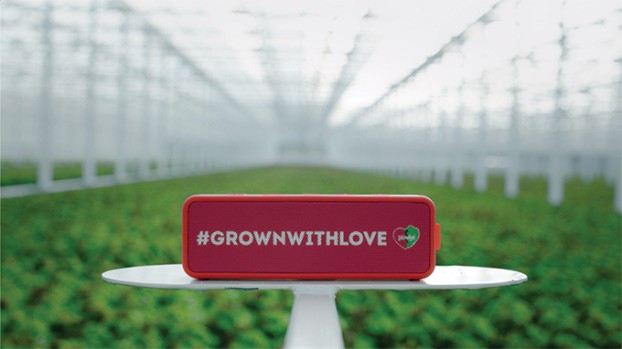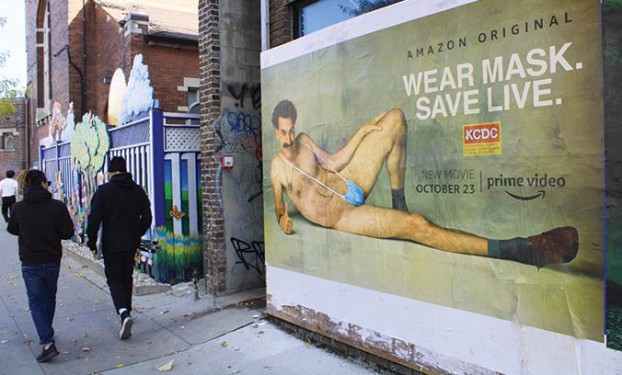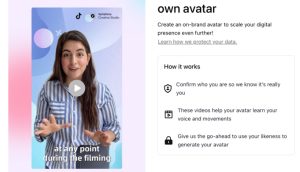
This story originally appeared in the Winter 2021 issue of strategy.
“PR agencies do content. Creative agencies do content. What we didn’t want to be was a media agency doing content as a cheaper offering to a creative agency.” That’s Helen Galanis, CEO of Initiative Canada, discussing why her agency decided to double down on content as a discipline by launching Storyline.
Initiative’s philosophy is built on the idea that “people don’t like advertising. It’s really easy to avoid it now, and technology makes it easier every day,” she says. So, while Initiative’s job is to identify exposure opportunities, Storyline’s job is to create relevance.
The new division hit its first home run last year while working with Tourism Alberta. During the winter, destinations like Alberta are a bigger challenge to sell, with frigid temperatures making the province less inviting for travelers, especially during COVID.
So the Storyline team helped the tourism agency bring the magic of winter in Alberta to life through “The Art of Winter,” where it enlisted 11 local artists to create a series of original art. A virtual exhibition featured their work – which also ran in the Globe and Mail as part of a branded content piece – and an original song by an Indigenous musician was commissioned to play in the background while users explored the installation.
The new content hub is currently made up of a team of six, consisting of content strategists, producers, and project managers. Chris Gairdner, the agency’s head of content, who Galanis says is “an equal part strategy and media guy” helped develop Storyline.
The team develops original ideas and works with content partners and media owners, like the Globe and Bell Media, production studios and independent creators, to bring them to life, Gairdner explains.
“Storyline can take on projects beyond what a typical agency team would probably consider content,” he says, giving examples such as TV series, 360-degree video, podcasts, exhibits or even cookbooks.
While Travel Alberta’s campaign is an example of Storyline’s content-knows-no-format approach, the agency also develops traditional video content.
For instance, when RBC was looking to build a connection to Canadians nearing retirement age, the shop created “Second Act,” a content platform that reframes the idea of retirement by showing how Canadians have used it as a chance to redefine themselves and pursue passions. It came to life as a three-part video series with Bell Media profiling Canadians and their “Second Acts,” including Olympic Athlete Donovan Bailey who has used his retirement to give back to the community and mentor young athletes.
Gairdner explains that Storyline incorporates “a mix of retained resources and scoped fees… In some cases, we’re bringing content ideas forward and taking a share of the media budget, while in others we’re briefed on specific content budgets and therefore have grown the total scope for the agency.”
Nish Shah, CSO, adds that the team will only bring in Storyline when it feels right for the client. “We never want to force content as the solution or as the starting point. It always starts with a media-agnostic approach.”
Measuring the impact of the content it creates is a priority going forward, Galanis adds, noting that it isn’t as linear as measuring traditional media KPIs, which is something Shah will focus on. “That’s why we are treating this year as an incubator,” she says. Now it’s about “scaling what we already have and giving them the room to grow and take on new projects.”
With this in mind, the agency did some research through Magna, IPG Mediabrands’ intelligence, investment and innovation resource, says Shah, which outlined content’s role in preventing people from getting “stuck” in the middle of the customer journey.
Specifically, it showed that when content was used in the consideration stage, the audience was 12% more likely to reach the end of the purchase journey.
“It’s year one, and we’re just starting to appreciate what Storyline’s potential is,” Galanis says. “The focus is ‘great work’ but I think one of the discussions we will have for 2022 is ‘how big is this, and where does it go?'”
All signs point to both Storyline and Initiative going in the right direction, with Shah noting that since 2019, “our products’ revenue, which includes Storyline and other initiatives, has increased by 115%,” adding that it’s had seven new business wins this year alone. “And we’re not done yet!”
New business
BPTN, Canopy Growth, Government of Ontario, Destination Ontario, Ministry of Colleges & Universities, Ontario Cannabis Store, St. Lawrence Parks Commission, Trillium Gift of Life Network
New hires
Magnus Nisbeth, Mike Cortiula, Jad Chababi, Justin Cumby, Riaz Backer, Eugenia Kung, Alberto Mangones, Lara Senbanjo, Nick Smith
Office
Toronto
Staff
214
Media cases
1. For Amazon‘s Borat Subsequent Moviefilm, Initiative built a disruptive media plan that channeled the spirit of the ludicrous character. It began with a 40-foot inflatable Borat atop a massive barge while wearing a medical mask as a “man-kini.” His message: “Wear mask. Save live.” Then, the agency installed outdoor mask dispensers on a cardboard cut-out of the protaganist, which Canadians could pull from. And, finally, a touring video truck featured a dancing Borat on the streets.

2. The shop helped Wendy’s livestream its lettuce as it was being grown hydroponically in a greenhouse, with Twitter Polls and tweets from viewers online.

3. For Travel Alberta, the media agency worked with local artists to produce artwork that was revealed during the Winter Solstice and incorporated into a light installation, “Solar Flare.”
























